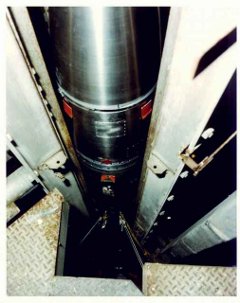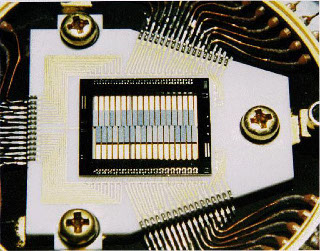XQC Sounding Rocket experiment: The sounding rocket took 15 minute flights to 240 km altitude and would land by parachute. This is the first test of the microcalorimeter in space.
Credit: NASA/GSFC/University of Wisconsin-Madison
So I looked in my drawer, and there it was. I had the calculation because a year before a fellow from the National Institute of Standards and Technology called me and wanted to know how well we could measure pulses of laser light using a thermal detector, and I came up with a mathematical answer. Detecting the energy deposited from a single X-ray is exactly like that problem, so I had already solved the X-ray group’s problem in a different guise. When I looked at my calculation, I realized that the thermal detectors would be perhaps 50 times better than what the silicon detectors were doing for X-ray detection.
Well, when I visited the X-ray group the next day they were rather incredulous – but excited. So we tested out a few devices to see if they would work as expected. Things were so promising that the X-ray group put me in touch with Dan McCammon, from the University of Wisconsin, who turned out to be exactly the right guy to collaborate with on this.
The next summer, Dan came out to Goddard and we lived in the lab for the entire summer and got the results using the microcalorimeter for X-ray spectroscopy for our first published papers.
X-ray Quantum Calorimeter (XQC): Image of the XQC array mounted on a circuit board and installed in the flight detector box. The XQC experiment is composed of a 36 pixel microcalorimeter X-ray detector. The entire array is micromachined from a single piece of silicon with each pixel measuring 0.5 x 2.0 mm.
Credit: NASA/GSFC/University of Wisconsin-Madison



